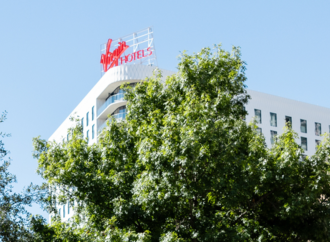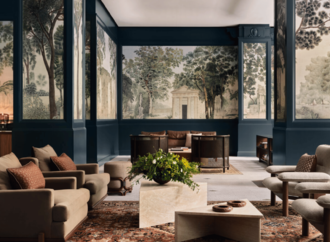Location: Galleri Urbane 2277 MONITOR ST. Dallas, TX 75207
Galleri Urbane is pleased to present Revaluation of Origin, an exhibition of work by Juan Alberto Negroni. This is the first solo show for Negroni, who has participated as a visiting artist in numerous group shows at the gallery since 2018. Temporality is evanescent in the artist’s new work. Or, rather, everything might be a mirage. In this first intentional foray into Artificial Intelligence, Negroni uses the technology as a potent tool in a partnership laced with dualities that culminates in a new vision, at once dulcet and haunting, ancient and modern.
Using an AI application, the artist delivers prompts “intended to generate images of atemporal hypothetical spaces,” he says. They begin with a request for the past: 1930s or 40s black-and-white photography. From there, he leans toward the otherworldly. His subjects—collections of monoliths on abandoned beaches or hovering in deserted expanses—could be anywhere, anytime.
Layered on top is his customary grid, here used to anchor. His subject-objects disorient. They are lost, when it is unclear what it would mean to be found. They are solitary, though they share the picture plane. Melancholy and meditative despite their non-sentience, they wax nostalgic, though there is no clear before or after.
Existentially and narratively, each picture is its own enigma, delicate as a memory and hazy as smoke. They are mute; like stones or earth are mute. And their titles speak in riddles. And yet, they explore a colonial history. Inspired by architecture and archeology, Negroni has plumbed the motif of the Caribbean’s history of enslavement and colonization. “I’m trying to create a new narrative, thinking about what would have happened if those important chapters in the racial mixture that occurred in the Caribbean and South America would have never happened,” Negroni says. “The rocks, depicted in various contexts and forms, symbolize the revaluation of origins—both collective and individual.” Thus, we might read them as artifacts from an imagined future’s past.
Constantly, the artist is thinking about legacy, as well: What is left for us to carry on as a culture, but also what are we leaving for future generations? If the work is poetic, it is a poetry of the untethered. If Negroni plays the role of the archeologist, he excavates possibility instead of the past. Thus, adrift and anchored, borrowing both Surrealist and Symbolist tendencies, the works in Revaluation of Origin exist between reality and what doesn’t—and, poignantly, cannot—exist.







.d093a094a9f629e00de6694c52c06eb34811.png)
